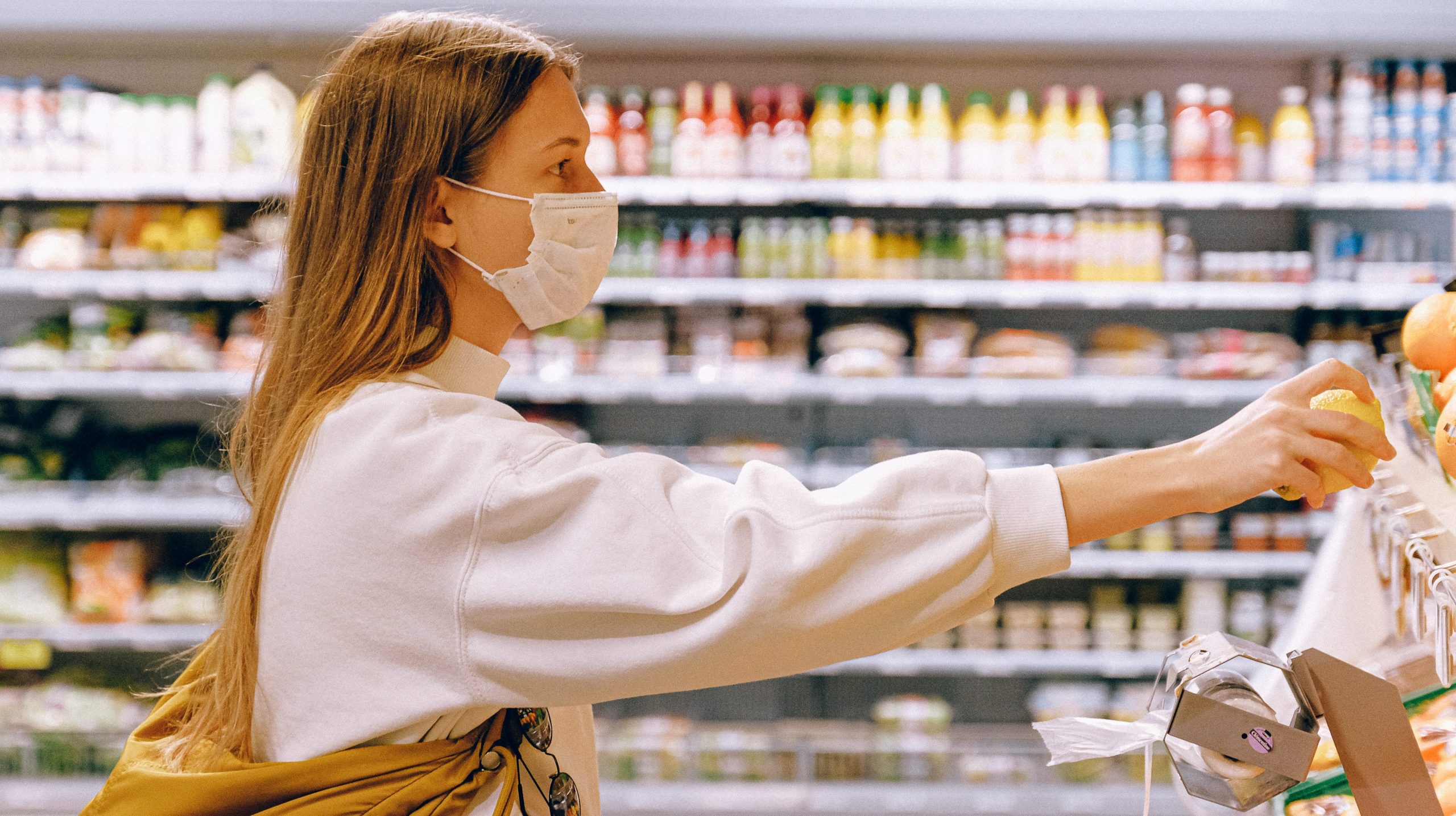As wounded retailers welcome customers back to their physical locations, they’re eager to hear the sounds of tapping credit cards. The notion of retail therapy is a warm thought to store-owners and customers alike, but all is not ‘normal’ in shopping malls and stores. With society still dealing with the reality of the COVID-19 virus, making stores, offices and public spaces as safe as possible is a matter of both public safety and consumer confidence. Patience, diligence and forethought are the key ingredients in the quest for safety; getting it right is not only an obligation, but a branding opportunity.
Retail Safety Measures
Safety measures that were foreign concepts just a few short months ago now seem like well-established norms. Enhanced cleaning and disinfecting, the availability of hand sanitizer, plexiglass barriers and mask-clad staff and shoppers are now as much a part of the retail experience as muzak and rewards points.
Shoppers navigate the aisles of their favorite stores in accordance with a network of directional stickers and signage, while staff are forced to take on the role of referee, overseeing a new form of retail dance that shoppers are learning in real time.
Such safety measures come at a price to store-owners already beleaguered by slow sales, but are the table-stakes for those who wish to operate during the pandemic.
COVID-19 Compliance
As stores stress diligence with their safety measures, they are mandated to follow stringent procedures assigned by both government regulators and corporate head offices. Third Channel, Inc. has released an app featuring a real-time safety auditing system designed to help stores organize their efforts in customer information, employee education, cleanliness, security and guideline compliance.
“Many stores have been working to rapidly deploy new health and safety protocols,” says Third Channel CEO Gina Ashe. “We’re seeing discipline sliding quickly, and there are already significant gaps in our processes that can no longer be overlooked. Retailers must remain vigilant for at least 12-18 months, and we are ready and prepared to support them as they tackle the challenges ahead.”1
Elevator Safety During COVID-19
Office buildings and other public spaces that rely heavily on elevators face a special challenge. The people-moving boxes are a great way to go up and down, but leave little space for physical distancing. ‘Elevator consultants’ are suddenly in demand as building owners look for strategies which allow for safe and effective elevating.
Voice activated panels or the utilization of a good old fashioned pencil or tooth pick aim to reduce the number of fingers that touch buttons. Some elevator operators have installed ultraviolet light which kills bacteria. Staggered arrival and departure times help reduce logjams while proper queueing protocols avoid unnecessary huddling in lobbies.
Maximum loads of four individuals per elevator are being implemented and riders are urged to retreat to the elevator’s four corners, face away from one another and avoid talking. It would appear, at least for the time being, that the ‘elevator pitch’ is dead, bad news for any ambitious individuals who find themselves riding with a CEO or venture capitalist.
Safety Branding and Virtual Retail
As eager as many shoppers are to return to their favorite stores, an aura of trepidation underlies the experience. Stores that practice a commitment to safety – and communicate it effectively – stand to be rewarded, while those who don’t may pay the price. Practicing stringent safety protocols while trying to present an upbeat and positive shopping experience can be a bit of a tightrope walk, but those who get it right will earn customer loyalty.
The COVID lockdown saw an increased emphasis on e-commerce and, as consumers return to brick and mortar locations, technology also plays a role in safety. Eyewear realtor Clearly have attached QR codes to their frames, allowing customers to see how they’d look in each pair without physically trying them on. 2
Our recruiters have noticed that some restaurants have replaced paper menus with QR stickers on tables, allowing diners to access online menus. Not only do the virtual menus prevent the spread of COVID-19, they also save paper and are easily updated when menu offerings change.
Combining digital initiatives with in-store shopping is nothing new, as retailers have increasingly recognized the data and loyalty that can be gained from merging the channels but, like so many other emerging technologies and practices, its uptake has been hastened by new concerns.
Shopping During COVID-19
Ultimately retailers and consumers alike are still searching for normalcy during these unprecedented times.
“I’m always scared someone is going to cough on me or get really close to me,” says avid shopper Camille Laverdure. While she likes to shop in person, it’s nothing like before, she says. “It’s definitely more stressful, with all the one-ways in the stores its hard to stay focused on what you’re shopping for,” Laverdure says.3
Retailers who utilize forethought and strategy to react to whatever comes next will ultimately position themselves to survive, even thrive, in the near and distant future.
Cited Sources
1 “ThirdChannel, Inc. Develops Retail Industry’s First Safety Auditing System.” Business Wire, June 9, 2020. https://www.businesswire.com/news/home/20200609005124/en/ThirdChannel-Develops-Retail-Industry%E2%80%99s-Safety-Auditing-System.
2 Clearly. “Reopening to a Whole New World: Clearly Integrates New Technology into Retail to Ensure Customer Safety.” Cision in Canada, June 23, 2020. https://www.newswire.ca/news-releases/reopening-to-a-whole-new-world-clearly-integrates-new-technology-into-retail-to-ensure-customer-safety-811554468.html.
3 Oduro, Kwabena. “Coronavirus: Opinions Mixed among Montreal Shoppers on COVID-19 Safety Measures.” Global News. Global News, June 12, 2020. https://globalnews.ca/news/7060933/coronavirus-montreal-shopping-covid-19-safety/.




